As a society, we’ve come so far that you can witness accessibility in our daily lives everywhere around us. You can see it in beeping traffic lights, designated parking spaces, access ramps, etc. The goal is to provide equal opportunity to everyone, especially those who are in some way impaired. It’s only natural that these stances are then also applied to the Internet.
In some cases, sites should look to make their content available to everyone, and in other cases, they must. The main differentiator is if the site is run by a private company, or if it’s a site related to a public service like the local government’s official pages. Usually, private businesses are encouraged to take steps, while public service sites are obligated to do so.
What is web accessibility

Web accessibility suggestions, rules, regulations, and laws vary from country to country, so even though the platform in question is the same for everyone there are inescapable differences. The most comprehensive and universal set of guidelines that legislation in most countries regarding web accessibility is founded on can be found within the Web Content Accessibility Guidelines (WCAG) published by the Web Accessibility Initiative (WAI) of the World Wide Web Consortium (W3C).
These guidelines have gone through several iterations since they were first published back in 1999.
The 1.0 version covered only the most basic features sites should look to incorporate into their operating and visual models. From then on, the document has been revised and expanded upon with the last complete version 2.0 coming out in 2008. and smaller addendums being incorporated up until the 2.1 draft was published in 2018.
The US, European Union, UK, Australia, and Canada, to name a few, have all made parts of these guidelines into legislation that’s taken seriously to the point of successful lawsuits against those who have failed to comply. In the US, it’s part of the American Disabilities Act, in the EU it’s defined by the EN 301 549 standards, the UK has the BS 8878 part of the Equality Act of 2010, and so on. This is just more reason to take this issue seriously and go the extra mile to make your pages accessible to everyone.
What to focus on
By now you probably have a good understanding of what web accessibility is and what it aims to focus on. However, while full inclusion is the ultimate goal, there are certain impairments that jump out right away.
Probably the first thing that comes to mind is visual problems that include everything from poor eyesight to partial or complete blindness. For these people using the web is just as essential as it is for the rest of us. The obvious solutions to help are text to Braille converters and/or text to ai voice generators. There’s only so much you can do from a webpage but configuring it to seamlessly display larger text and images is a good first step, as is implementing alternatives to color-coding for links (like underlining or using a different font) to help out the colorblind.

Textual content won’t be a problem for those with hearing impairments, but videos and audio files can be. Be sure to use videos that are closed captioned, or maybe even have a sign language addition so everybody can understand the content on display.
While we instinctively think of visual and auditory impairments when we hear about inclusion, web accessibility covers much more than that. Animation and graphs can be used for those that suffer from dyslexia, plain sites for those that have seizures, the option to use various input devices for those with mobility issues.
Bunching it all up like this might seem as if you’ll have to waste valuable time and resources in order to comply, but none of this needs to be done manually. Since this is a big part of the market today and is probably going to be even bigger down the line, there are services that offer testing, solutions, and certificates for your sites, all for the purpose of providing an equal opportunity for all your visitors to enjoy your content. We’ll be singling out the best in the field so you don’t have to go and scour the web to find the perfect solution for you.
accessiBe
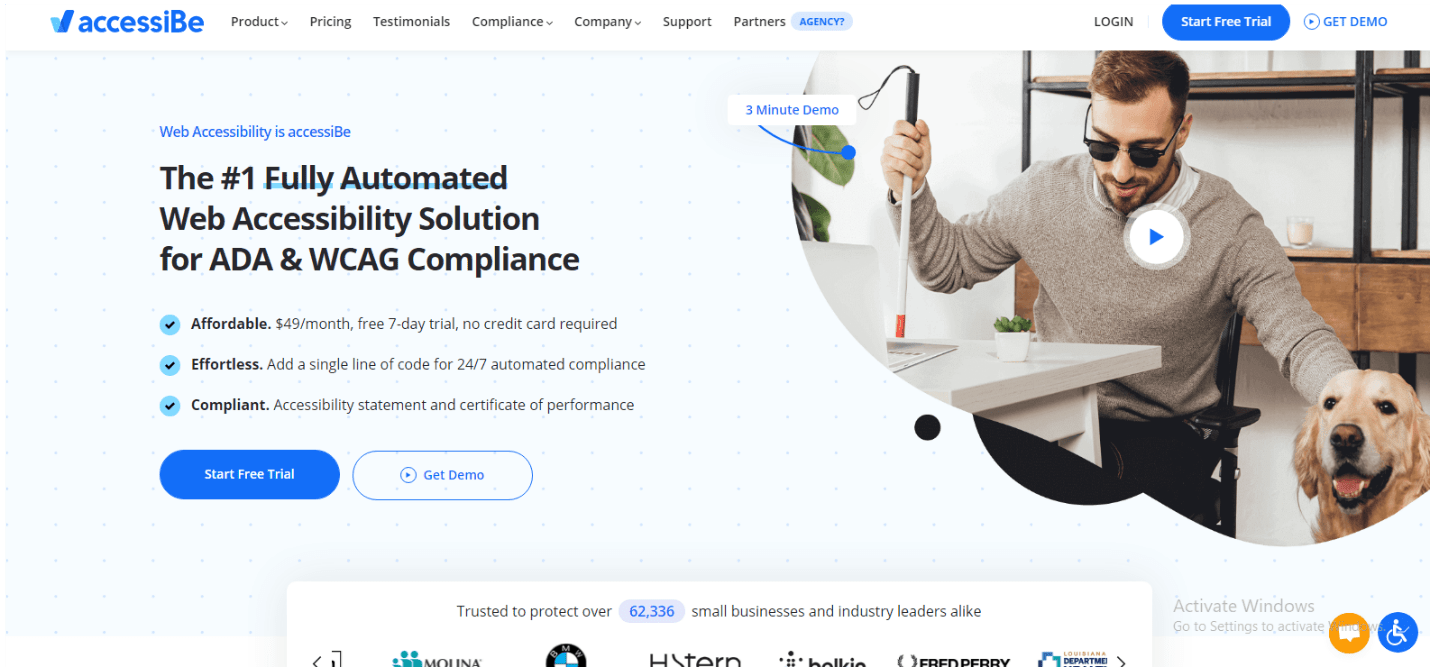
accessiBe looks to build success on two distinct pillars – the frontend accessibility interface and the backend AI scan and adjustment processes. Combining both of these makes for a near-perfect service. Let’s break them down a bit so you get a better sense of what we’re talking about.
The idea behind the accessibility interface is that you don’t need to modify your site at all. Instead, you integrate the interface that will work like an editor your visitors can use to modify elements on the site themselves. Changes extend to things like cursor size, text fonts, and sizes, color schemes, etc. Essentially everything that’s covered within the WCAG is accounted for.
Letting your visitors personalize their experience will at the same time make it better from their perspective and alleviate you of the burden of having to account for every possible scenario.
On the other hand, we have the AI-powered backend processes that are crucial for your pages to maintain their accessible status. Just imagine how much time it would take to sift through every bit of new content you put up and check if everything’s in order. You would either lose so much time that other work would suffer, or you would have to hire a person specifically for that function.
Well, the devs at accessiBe have developed an AI-powered scanning process that checks all your pages (and every element on them) at least once every 24 hours and makes the necessary adjustments to keep them compliant with the guidelines.
Together, these two features work to give you the complete package and compliance with the WCAG and ADA (for US-based sites) without you having to spend any extra resources other than subscribing to the service.
eSSENTIAL Accessibility
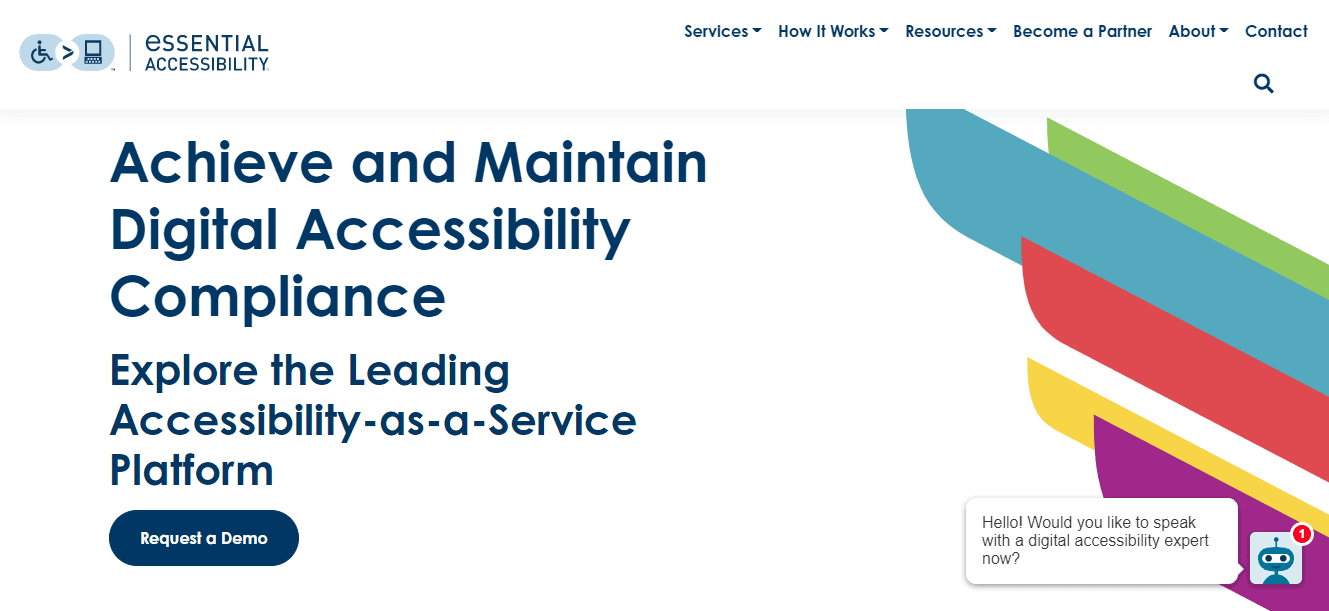
With eSSENTIAL Accessibility, everything starts with an audit. They’ll go through your site with a fine toothcomb highlighting every aspect of your pages that could potentially be an issue. After the comprehensive audit, they’ll provide you with solutions on how to improve and afterward work to maintain that high level of accessibility.
The great thing about the service is the approach that differentiates between short-term solutions and long-term strategies. Short-term solutions tend to be quick and easy to implement so the results are immediate. These are used for instances where you must patch up glaring accessibility issues. On the other hand, long-term strategies are systematically implemented and follow up on to the point where you don’t have to worry about compliance at all, going so far that the consulting service will reach out to your visitors to let them know of the changes.
Online ADA
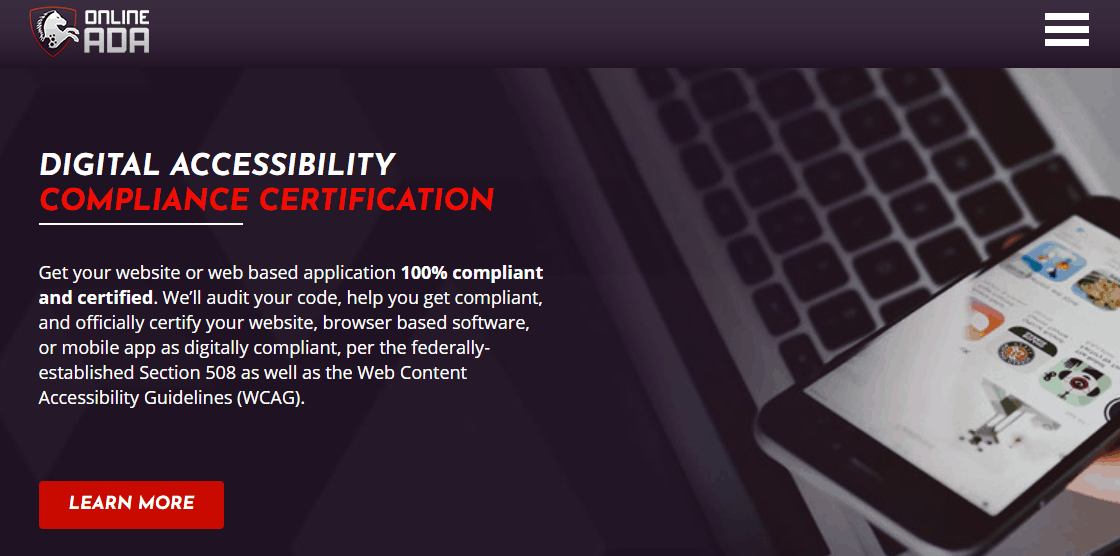
Online ADA also starts with an audit of your site in order to pinpoint where issues may lie. Once the report is compiled a plethora of options opens to you.
First, you’ll be given detailed recommendations on where and how to improve. Since the site reviews are done manually, you’ll be able to pick and choose what features you need. For example, you need a magnification tool but not a color scheme change option – not a problem. This all stems from the manual implementation process – because it’s not automated it’s much easier to personalize the service and therefore your site in general.
Another thing worth mentioning is the comprehensive database of web accessibility information you can access for free. If you have coding experience and are working on a budget, you’ll have a place to dig for the information you can then use to alter your code and create your own solutions. With such a database open to you, you can have a more hands-on approach even if your input stops at the implementation level (and the professionals at Online ADA take over) if you so choose of course.
EqualWeb
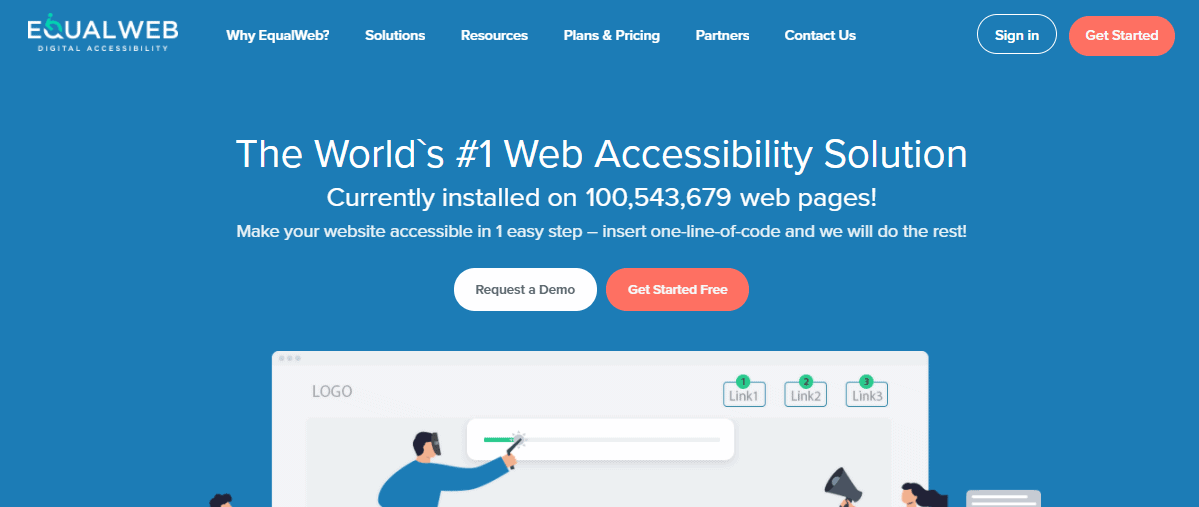
EqualWeb is set up around a widget that enables your visitors to adjust elements of your site to their specific needs. This is incorporated into your site through a single line of code you’ll add to your JavaScript. Of course, you’ll get all the necessary information on what to add and where to add it, just so there is no chance for mistakes on your part.
The added line won’t affect your site (content-wise), or even the rest of your code, it’s there to allow the devs to make your pages compliant with the guidelines. In other words, this is the doorway that’s crucial for the widget to work.
The widget presented to your visitors isn’t universal, you can customize it from the backend to expand or limit the available editing options. Finally, after everything is set up, you can rest assured that EqualWeb will update and modify your pages as regulations change over time, so you’re always up to date and certified.
Make-Sense
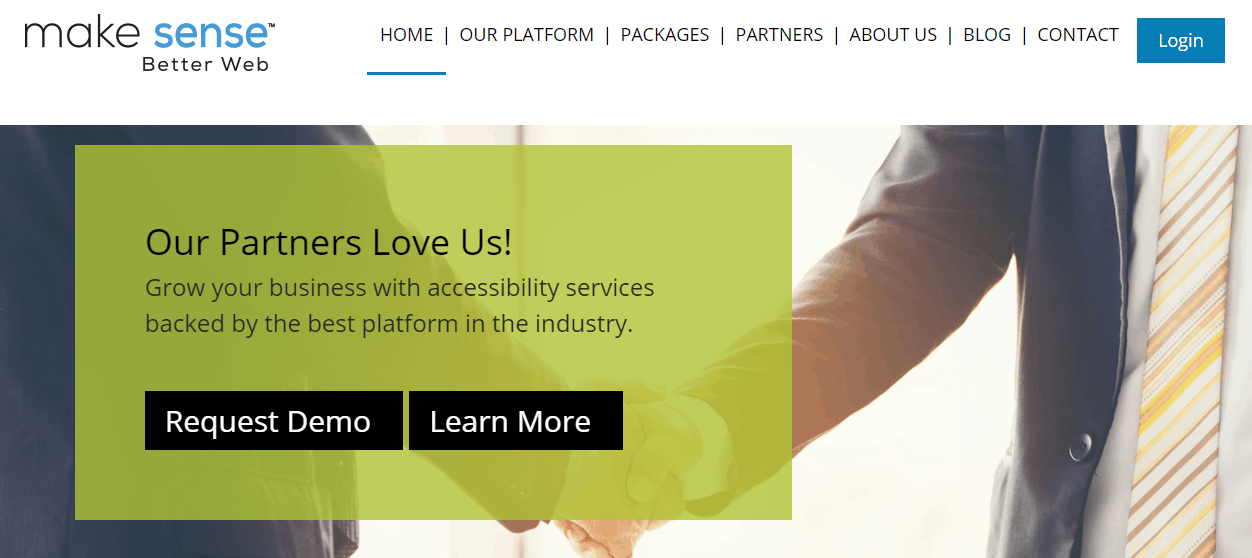
Very much alike to other solutions we’ve mentioned so far, Make-Sense is also implemented into your site as a widget, where you’ll only have to slightly alter your source code by following detailed instructions. Once the code is added, your pages can be reviewed and kept compliant long-term without you having to do anything. Make-Sense ensures all your old pages and new ones you’ll be adding are scanned in real-time, so the potential for compliance issues is minimal.
After implementation, you can track everything you’ll need from the backend using a helpful dashboard. Even though much of the features are automated, it’s always wise to keep track of the data either as only informative or to perhaps make further changes to your accessibility strategy.
Summary
Each of the mentioned services represents a high-end product that will make your site compliant with all guidelines and/or laws, however, how they go about it differs from service to service.
In this regard we have to highlight accessiBe for its innovative two-pronged approach that really covers all the bases from implementation, through frontend features, to finally complete long-term maintenance.
Again, while each of them has merit in their own right and you won’t go wrong either way, if you’re looking for the top solution accessiBe would be the one that rises to the top.